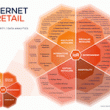

Event date: March 23-24, 2016
DoubleTree by Hilton Hotel London-West End
London, United Kingdom
In a growing IoT world, with 94% of companies already seeing a return on their IoT investments, the potential
benefits are clear. However, the path to a fully realised Industrial Internet is not without its challenges.
February 15, 2016
Posted by: IoT global network

The greatest importance for IoT within Africa as a whole is to provide critical information to its users, enabling them to make informed decisions and in a lot of cases save lives, writes Stephen Stewart, the regional director for Africa at Eseye, in the second part of his blog exploring IoT deployment in Africa. (more…)
February 10, 2016
Posted by: George Malim

Beecham Research has been working with specialist IoT event organiser Vinelake to create a new series of IoT events organised specifically around business users (see outline of events at this link). The aim of these, explains Robin Duke-Woolley, the chief executive of Beecham Research, is to be user centric and to explore the opportunities that M2M and IoT have for business users by assessing the business benefits they can gain from introducing connected device solutions. (more…)
Posted by: George Malim

Who would have thought that the Internet of Things (IoT) could impact anything from artificial insemination of cows to supply chain management decisions, writes Nick Finch, the technical director of Concentra? (more…)
February 9, 2016
Posted by: George Malim

The first wave of connectivity to serve the continent of Africa was mobile communications; in fact more than double the population in sub-Saharan Africa (SSA) has mobile phone access compared with access to paved roads, writes Stephen Stewart, the regional director for Africa at Eseye. (more…)
February 8, 2016
Posted by: George Malim

Intelligent device manufacturers are operating in an environment that is more demanding than ever: devices are becoming more interconnected in the Internet of Things (IoT), profit margins on those devices are being squeezed as competition heats-up across a global stage, and customers are demanding more flexibility in tailoring products to their needs than ever before, writes Vincent Smyth, the vice president for EMEA at Flexero Software. (more…)
Posted by: George Malim

IT is no longer the sole guardian of technology in the business. From IP enabled turnstiles to smart manufacturing systems that continuously monitor and optimise performance and smart buildings with IP connected environmental controls, the Internet of Everything (IoE) is slowly but inexorably expanding across every business environment, writes John Pepper, the chief executive and founder of Managed 24/7.
Right now, however, these deployments remain completely separate from the core business network – and IT has little or no visibility of IoE deployments. While companies are gaining operational benefits, these siloed deployments also represent significant operational risk. Security is the primary concern, but organisations are also missing out on essential business information. By failing to consolidate IoE deployments into the core network, organisations cannot enable CxOs to take advantage of a depth of real time analytics that should be informing changes to every part of the building, estate and production systems.
It is, therefore, no surprise that there is a growing CxO push to integrate IoE into the existing corporate network, not least to exploit IT’s security expertise. Few CxOs even consider any difficulties arguing, quite reasonably, that there is little or no difference between an IP enabled temperature sensor and any cloud based application. However, there is one fundamental and essential difference to consider: IT systems are still managed on the basis of 99.999% – five nines – availability; IoE demands 100% availability – failure is simply not an option.
A small but growing minority of IT organisations have therefore begun to explore the value of consolidating monitoring tools to move beyond break/fix to a predictive model that delivers 100% uptime. End to end monitoring that accurately predicts trends in performance combined with self-healing technologies both prevent problems and enable organisations to achieve far more effective IT utilisation.
Given the speed with which devices are becoming Internet enabled, there is no time to delay. But organisations have some tough questions to consider. From ownership to budget, capacity planning to network audit and security, organisations need to determine where the responsibility lies for this new connected model – and, critically, ensure IT embraces the predictive approach required to deliver the 100% availability now required of these essential systems.
The role of IT is changing; today’s requirement to support servers is evolving fast to one that is about managing millions of connected devices, from coffee machines to life saving NHS equipment. IT needs to step up quickly to embrace this critical, predictive model for every aspect of the corporate infrastructure.
February 5, 2016
Posted by: George Malim
North America’s First Antenna & RF Design Center for M2M and IoT Devices

The Internet of Things (IoT) has truly begun to take off with enabled devices including smart watches, smart meters and connected cars as well as smartphones and tablets, writes David Watkins, the service delivery director at Virtus Data Centres. However, technology and appliances are not the only industries affected by this growing trend. In fact, IoT’s potential reaches far beyond, and could play a major role in helping disconnected industries re-engage with their customers. (more…)
Posted by: George Malim

February 2, 2016
Posted by: George Malim